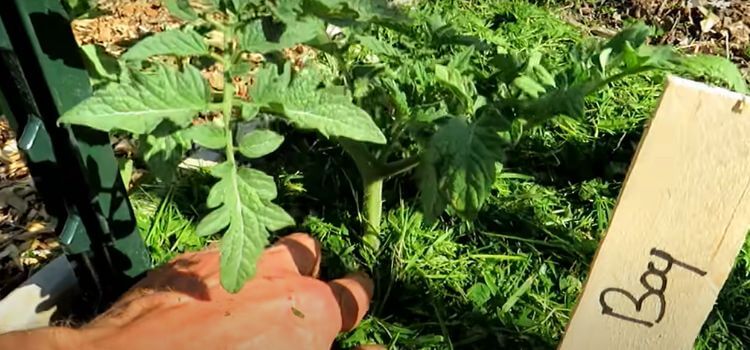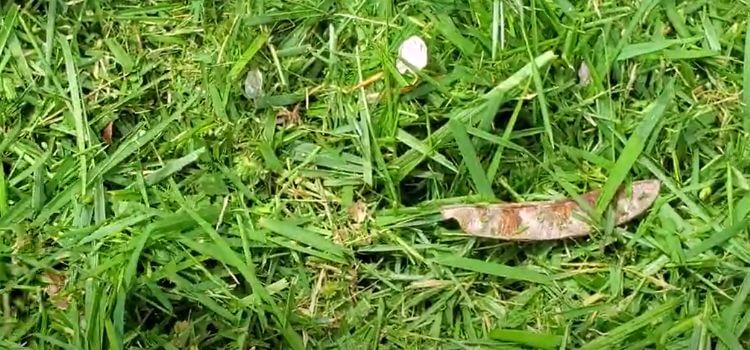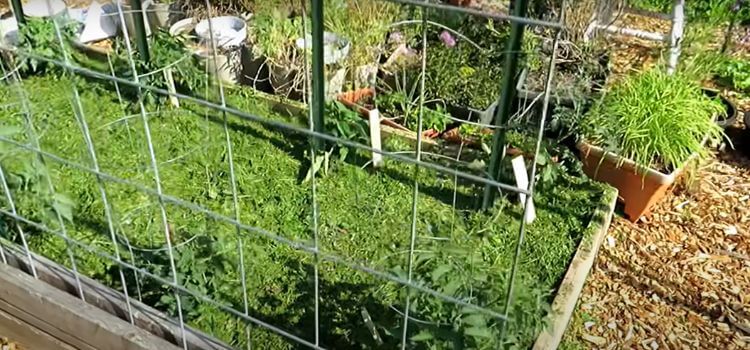As an Amazon Associate, I earn from qualifying purchases.
Spread grass clippings evenly around plants, ensuring a thin layer to avoid matting. Water thoroughly to help the clippings settle.
Grass clippings make excellent garden mulch. They provide essential nutrients, help retain soil moisture, and suppress weeds. Fresh clippings decompose quickly, enriching the soil with nitrogen. Avoid thick piling clippings, which lead to matting and hinder water penetration.
Ensure the grass is free of seeds and chemicals before using. Grass clippings are a cost-effective and eco-friendly mulch option. They recycle yard waste and improve garden health. Regularly replenish the mulch layer to maintain its effectiveness. This simple practice promotes robust plant growth and a thriving garden environment.
Benefits Of Using Grass Clippings As Garden Mulch
Mulching is a great way to keep your garden healthy and thriving. One of the best and most eco-friendly mulching materials is grass clippings. Not only do grass clippings help in retaining soil moisture, but they also suppress weed growth and add essential nutrients to the soil. This makes grass clippings an excellent choice for your garden mulch needs.

Improves Soil Moisture Retention
Grass clippings can significantly improve soil moisture retention. Placing a layer of grass clippings on the soil creates a barrier that reduces water evaporation. Less watering is needed, saving time and resources.
Here are some benefits:
- Reduces water evaporation: Keeps soil moist longer.
- Less frequent watering: Saves time and water.
- Improves plant health: Consistent moisture levels are crucial.
Grass clippings also help maintain an even soil temperature, which is particularly beneficial during hot summer months. The layer of clippings acts as insulation, keeping the soil cooler and preventing heat stress on plants.
Suppresses Weed Growth
Grass clippings are effective in suppressing weed growth. Weeds compete with your plants for nutrients, water, and light. A thick layer of grass clippings can block sunlight from reaching weed seeds, preventing them from germinating and growing.
Key points include:
- Blocks sunlight: Prevents weed seeds from germinating.
- Natural barrier: Reduces the need for chemical weed killers.
- Less weeding: Saves time and effort.
Grass clippings also create a physical barrier, making it harder for weeds to push through. Using grass clippings, you can maintain a cleaner and more manageable garden.
Adds Nutrients To The Soil
Grass clippings decompose quickly and add valuable nutrients to the soil. They are rich in nitrogen, which is essential for plant growth. As the clippings break down, they release these nutrients into the soil.
Advantages include:
- Rich in nitrogen: Promotes healthy plant growth.
- Improves soil structure: Enhances soil fertility over time.
- Eco-friendly: Reduces the need for synthetic fertilizers.
The decomposition process also improves soil structure, making it easier for plant roots to penetrate and absorb nutrients. Using grass clippings as mulch creates a healthier and more sustainable garden environment.
Preparing Grass Clippings For Use As Mulch
Using grass clippings as garden mulch is a sustainable and effective way to nourish your garden. Grass clippings provide essential nutrients, retain moisture, and suppress weeds. Proper preparation is crucial before using grass clippings. This process includes collecting, drying, and chopping the clippings to ensure they benefit your garden.
Collecting Fresh Grass Clippings
Collecting fresh grass clippings is the first step in preparing mulch. Fresh clippings are rich in nutrients and moisture, making them ideal for garden use.
Here are some steps to follow when collecting:
- Mow your lawn when the grass is dry.
- Use a bagging mower to collect clippings easily.
- Avoid mowing when the grass is wet.
- Remove any debris or leaves before collecting.
Collect clippings regularly to ensure a consistent supply. Fresh clippings are easier to handle and process.
Allowing Grass Clippings To Dry
Drying grass clippings is essential to prevent mould and rot. Dry clippings also decompose more slowly, providing long-lasting benefits.
Follow these steps to dry your grass clippings:
- Spread clippings thinly on a tarp or dry surface.
- Turn the clippings every day to promote even drying.
- Allow clippings to dry for about one to two days.
- Check for dryness by feeling the clippings. They should be crisp.
Properly dried clippings are less likely to clump together. This ensures even distribution in your garden.
Chopping Grass Clippings
Chopping grass clippings helps them break down faster. Smaller pieces decompose more quickly, releasing nutrients into the soil.
Here are methods to chop your grass clippings:
- Use a lawnmower with a mulching blade.
- Run over the clippings again to chop them finely.
- Use garden shears to cut clippings into smaller pieces.
- Utilize a garden shredder for more significant amounts of clippings.
Chopped clippings are easier to spread and mix into the soil, enhancing the effectiveness of your mulch.
Applying Grass Clippings As Mulch
Grass clippings are a fantastic, natural way to mulch your garden. They help retain moisture, control weeds, and add nutrients to the soil. Using grass clippings can make your garden thrive without harmful chemicals. Let’s explore how to apply grass clippings as mulch and the best practices to follow.
Creating A Layer Of Grass Clippings
Start by collecting fresh grass clippings from your lawn. Ensure the grass is free from pesticides and herbicides. Spread the clippings evenly over your garden soil.
Here are a few steps to follow:
- Mow your lawn and collect the clippings.
- Check that the clippings are dry and not wet.
- Spread a thin layer, about one to two inches thick.
Grass clippings decompose quickly, adding nutrients back to the soil. This helps your plants grow strong and healthy. Avoid using clippings from lawns treated with chemicals.
Avoiding Thick Mulch Layers
Using too many grass clippings can cause problems. Thick layers can block air and water from reaching the soil.
To avoid this, follow these tips:
- Keep mulch layers thin, no more than two inches.
- Allow the clippings to dry before applying.
- Mix clippings with other mulch types like leaves or straw.
Thick layers can also become matted and mouldy, harming your plants. Keeping the layer thin ensures your garden gets enough air and water.
Mulching Around Plants
Be careful when mulching around plants. Grass clippings should not touch the stems or leaves.
Follow these steps for the best results:
- Leave a small gap around the base of each plant.
- Apply clippings evenly around the plants.
- Check regularly and add more clippings as needed.
Mulching too close to plants can cause rot and disease. Keeping a gap ensures your plants stay healthy. Regularly check the mulch layer and replenish it as needed.

Tips For Using Grass Clippings As Mulch
Using grass clippings as garden mulch is an eco-friendly way to nourish your plants. It helps retain moisture, suppress weeds, and add nutrients to the soil. Grass clippings are readily available and cost-effective, making them an excellent mulch option for many gardeners. Follow these tips to maximize the benefits of grass clippings in your garden.
Using Chemical-free Grass Clippings
Always use grass clippings that are free from chemicals. Chemicals can harm your plants. They can also affect the soil quality. Here are some tips to ensure your grass clippings are safe:
- Avoid lawns treated with pesticides.
- Ensure no herbicides are used on the grass.
- Use clippings from organically maintained lawns.
- Collect clippings from your yard to be sure.
If you are unsure about the chemical use, it’s better to avoid using those clippings. Safe, chemical-free clippings will promote a healthy garden environment and not introduce harmful substances to your soil.
Avoiding Clumped Mulch
Grass clippings can clump together if not spread properly. Clumped mulch can block water and air from reaching the soil. This can harm your plants. Follow these steps to avoid clumping:
- Dry the clippings before using them as mulch.
- Spread the clippings thinly and evenly over the soil.
- Mix with other organic materials like leaves or straw.
Proper spreading ensures the mulch is effective. It also allows air and water to penetrate the soil, keeping the plants healthy and thriving.
Monitoring Moisture Levels
Grass clippings can help retain soil moisture. But, too much moisture can lead to problems. It’s important to monitor soil moisture levels regularly. Here are some tips:
- Check the soil for excessive wetness.
- Adjust the thickness of the mulch layer if needed.
- Ensure the mulch is thick enough, as it can trap too much moisture.
Healthy soil moisture levels promote plant growth. Overly wet soil can cause root rot and other issues. Regular monitoring ensures your garden remains in optimal condition.
Potential Drawbacks Of Using Grass Clippings As Mulch
Grass clippings can be an excellent mulch for your garden. They help retain moisture and add nutrients to the soil. Yet, there are some potential drawbacks to consider. This blog will explore the possible issues with using grass clippings as mulch.
Risk Of Nitrogen Depletion
Grass clippings are rich in nitrogen, but they can also deplete the soil. This happens when the clippings start to decompose. The microbes that break down the clippings need nitrogen. They take it from the soil, leaving less for your plants.
Here are some key points to consider:
- Microbial activity increases with grass clippings, consuming more nitrogen.
- This can lead to yellowing leaves in plants, a sign of nitrogen deficiency.
- Adding a nitrogen-rich fertilizer can help balance the soil.
Concerns About Herbicides
Many lawns are treated with herbicides. If present in the grass clippings, these chemicals can harm your garden plants. It is crucial to know what treatments have been used on your lawn.
Consider these points:
- Herbicide residues can persist in grass clippings.
- These residues may affect the growth of sensitive plants in your garden.
- Always use clippings from untreated lawns or wait a few weeks after treatment.
Potential For Clumping And Smell
When used as mulch, grass clippings can clump together, creating a barrier that blocks water and air. This clumping can also lead to a bad smell as the clippings decompose.
Key points to keep in mind:
- Spread the clippings in thin layers to prevent clumping.
- Turn the clippings regularly to promote even decomposition.
- Consider mixing grass clippings with other mulch materials.
Alternatives To Grass Clipping Mulch
Grass clippings can be an excellent mulch for your garden. They are easy to get and break down quickly. Mulching with grass clippings helps keep moisture in the soil and stops weeds from growing. But sometimes, you should try other types of mulch. Here are some alternatives to grass clippings that you can use in your garden.
Using Other Organic Mulch Materials
There are many other organic materials you can use as mulch. These materials break down and add nutrients to the soil.
- Straw: Straw is light and easy to spread. It helps keep the soil moist and cool.
- Wood chips: Wood chips take longer to break down. They are great for paths and around trees.
- Leaves: Leaves are free and easy to find. You can shred them to make them break down faster.
- Compost: Compost is rich in nutrients. It helps improve soil structure and fertility.
Straw is often used in vegetable gardens. It can be placed around plants to keep the soil moist. Wood chips are suitable for long-term mulching. They can be replaced infrequently. Leaves can be collected in the fall. Shredding them helps them break down quicker. Compost can be made from kitchen scraps and garden waste. It is a great way to recycle organic matter.
Exploring Inorganic Mulch Options
Inorganic mulches do not break down and do not add nutrients to the soil, but they have other benefits.
- Gravel: Gravel is heavy and stays in place. It is suitable for paths and driveways.
- Plastic sheeting: Plastic stops weeds from growing. It also keeps moisture in the soil.
- Landscape fabric: Landscape fabric lets water through but stops weeds.
Gravel can be used around plants that do not need much water. It helps keep the soil warm. Plastic sheeting is often used in vegetable gardens. It can be placed under mulch to stop weeds. Landscape fabric is suitable for flower beds. It lets water and air reach the soil but keeps weeds out.
Each type of mulch has its benefits. Organic mulches add nutrients to the soil, while inorganic mulches last longer and need less maintenance. Choosing the right mulch depends on your garden’s needs.

Frequently Asked Questions
Can You Put Grass Clippings Around Tomato Plants?
Yes, you can put grass clippings around tomato plants. They help retain moisture and suppress weeds. Ensure clippings are pesticide-free and apply a thin layer to avoid matting.
How Long Does It Take For Grass Clippings To Turn Into Mulch?
Grass clippings turn into mulch in about 1-2 weeks. Keep them moist and turn them occasionally for faster decomposition.
Can You Put Grass Clippings In Raised Garden Beds?
Yes, you can put grass clippings in raised garden beds. They add organic matter and nutrients. Ensure clippings are free from pesticides and herbicides. Mix them into the soil or use them as mulch. Avoid thick layers to prevent matting and mould.
Is There A Downside To Mulching Grass?
Yes, mulching grass can lead to thatch buildup. It also may spread lawn diseases if the grass is wet or infected.
Conclusion
Using grass clippings as garden mulch is both eco-friendly and cost-effective. This natural method enriches soil, retains moisture, and suppresses weeds. Implementing this practice will enhance your garden’s health and vitality. Start today to enjoy a greener, more productive garden.
Happy gardening!

